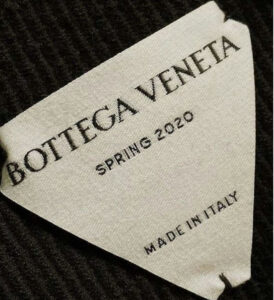
Italy has long been the heartbeat of luxury fashion, synonymous with craftsmanship, heritage, and unmatched artistry. The phrase “Made in Italy” is not just a mark of quality; it represents a legacy of artisanal excellence that spans generations. However, recent insights from Business of Fashion reveal a looming crisis that threatens this storied tradition—the closures of small, family-owned businesses that form the backbone of the Italian fashion industry.
These closures are not merely economic losses; they represent a cultural and creative erosion that could reshape the global luxury market. Many of these businesses, often passed down through generations, are struggling with rising operational costs, a shortage of skilled artisans, and an uncertain future due to a lack of succession plans. Simultaneously, international luxury brands are increasingly outsourcing production to lower costs and improve margins, further threatening Italy’s artisanal ecosystem.
What’s at Stake?
The potential decline of Italy’s artisanal production is far-reaching, affecting not just the country but the entire global luxury fashion industry. Here are some of the key risks associated with this crisis:
Craftsmanship in Jeopardy
The hallmark of Italian fashion lies in its artisanal techniques—meticulously honed over centuries and revered for their precision, attention to detail, and quality. From hand-stitched leather goods to intricate embroidery, these skills are cultural assets that cannot be replicated overnight. The loss of these artisans means the disappearance of techniques that embody the essence of Italian luxury.
Without intervention, the world could see:
•A decline in the authenticity and quality of luxury goods.
•A shift to mass production, sacrificing craftsmanship for efficiency.
•The fading of time-honored traditions that set luxury fashion apart from fast fashion.
The Sustainability Angle
In an era where consumers are increasingly conscious of transparency and ethical sourcing, the decline of authentic “Made in Italy” production could challenge luxury brands’ ability to maintain their sustainability commitments.
Luxury consumers today demand more than just aesthetic appeal; they seek:
•Ethical production processes that uphold workers’ rights and traditional craftsmanship.
•Locally sourced materials with a lower carbon footprint compared to outsourced production.
•Authenticity and traceability that align with sustainability goals.
Losing Italy’s artisanal production base could force brands to turn to regions with weaker labor and environmental protections, raising ethical concerns and risking reputational damage.
The Innovation Paradox
While Italy’s artisans are masters of traditional craftsmanship, many struggle to keep up with modern technological advancements that are transforming the luxury market. The lack of access to digital tools, automation, and sustainable innovation puts them at a disadvantage in an industry that increasingly values efficiency, customization, and sustainability.
Challenges include:
•Limited exposure to new manufacturing techniques such as 3D printing and AI-driven design.
•A generational gap, where younger talent may prefer careers in tech-driven fields over traditional craftsmanship.
•Difficulties in scaling operations to meet global demand without compromising quality.
To remain relevant, Italian artisans must find ways to blend heritage with innovation, preserving their unique artistry while embracing modern efficiencies.
Key Challenges Facing Artisanal Businesses
Several critical issues contribute to the crisis of “Made in Italy” craftsmanship:
Rising Costs and Global Competition
The increasing cost of raw materials, energy, and skilled labor makes it difficult for small artisanal businesses to compete with large-scale manufacturers in lower-cost regions. Many brands have resorted to outsourcing parts of their production to cut costs, leaving Italian workshops struggling to stay afloat.
Lack of Succession Planning
Many family-run workshops face an uncertain future due to a lack of interest from younger generations. The appeal of working in the luxury fashion supply chain is diminishing as younger talent seeks opportunities in more technologically advanced fields, leaving a widening skills gap.
The Shift to Fast Fashion Mentalities
As luxury brands adopt faster production cycles to keep up with consumer demand, the slow, meticulous pace of Italian craftsmanship often clashes with the industry’s evolving needs. Many brands now prioritize speed and cost-efficiency over traditional handcrafting methods.
Limited Government Support
Despite its cultural significance, the Italian government has been slow to introduce meaningful support mechanisms to protect the artisanal fashion sector. Policies that encourage tax breaks, training programs, and financial aid remain insufficient to tackle the scale of the issue.
What Can Be Done to Preserve “Made in Italy”?
To counter the decline of Italy’s artisanal sector, a multi-faceted approach is required. Fashion brands, government institutions, and artisans themselves should arrive together to ensure that Italian craftsmanship remains relevant and competitive.
Investment from Luxury Brands
Leading luxury houses such as Gucci, Prada, and Bottega Veneta have begun taking proactive steps by investing in local production networks, acquiring small workshops, and creating mentorship programs for young artisans. These initiatives include:
•Offering financial backing and resources to struggling workshops.
•Establishing apprenticeship programs to pass down skills to younger generations.
•Ensuring fair wages and working conditions to retain skilled artisans.
Case Study: Gucci’s “ArtLab” initiative, which focuses on innovation in craftsmanship while preserving traditional techniques, is a prime example of how brands can sustain artisanal ecosystems.
Government Support and Policy Changes
The Italian government must play a larger role in preserving its fashion heritage by:
•Providing tax incentives for businesses that commit to local production.
•Funding vocational training schools to encourage younger generations to pursue artisanal careers.
Embracing Technology While Honoring Tradition
Italian artisans must adopt modern tools without compromising their craftsmanship by integrating:
•Sustainable materials and processes, such as eco-friendly dyes and fabrics.
•Digital marketing platforms to expand their reach and connect with global consumers.
•Working with tech firms to integrate automation in non-critical production areas.
Encouraging Consumer Awareness
Luxury consumers must be educated about the value of authentic Italian craftsmanship and its role in maintaining ethical and sustainable fashion practices. Transparency initiatives such as QR codes on garments, detailing the origin of materials and craftsmanship involved, could help raise awareness and appreciation.
Fostering Partnerships
Industry-wide blended flow between fashion houses, artisans, and policymakers can ensure that “Made in Italy” remains a globally respected standard. Creating shared platforms for knowledge exchange and joint ventures can provide smaller workshops with the resources needed to thrive.
A Call to Action
The crisis surrounding “Made in Italy” is a stark reminder that luxury fashion cannot exist without the artisans who bring it to life. As the industry faces mounting pressures, it’s imperative that fashion brands, governments, and consumers recognize the value of Italian craftsmanship and work together to preserve it for future generations.
Whether through investment, education, or innovation, the time to act is now. If the industry fails to protect its artisanal backbone, it risks losing not just a label, but an entire cultural legacy that has defined luxury for centuries.
By taking bold steps today, the luxury fashion sector can ensure that “Made in Italy” remains a mark of excellence for years to come.
No comments yet.









